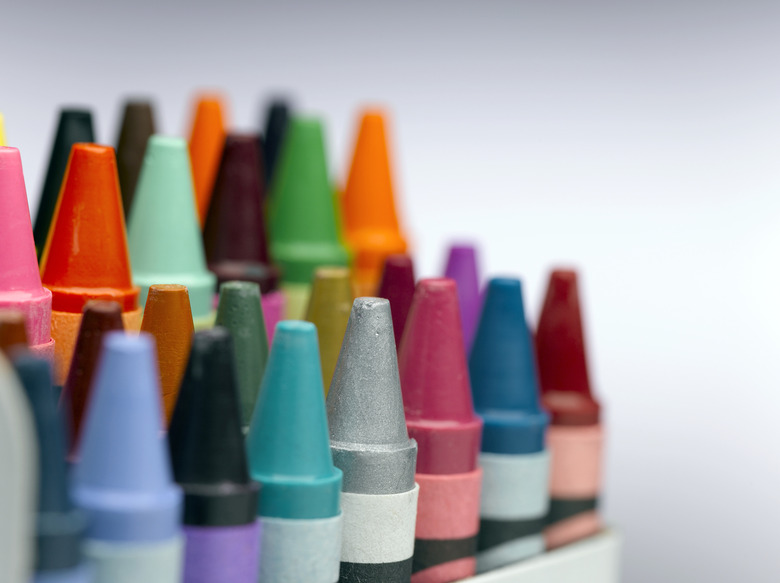Science Projects On Melting Crayons
Science projects involving melting crayons are primarily geared toward children of a younger age. Most require only a few simple supplies that you can find around the house and all of them require adult supervision throughout the process. But through these simple projects children can see how different temperatures affect their crayons and even how their broken crayons can be put to use again.
Which Color Melts the Fastest?
Which Color Melts the Fastest?
For this project you will need four or five crayon colors of your choice. Decide before you begin which color you think will melt the fastest. According to Crayola, different colors may melt faster than others due to their pigment. You will also need a stainless steel pot, cooking spray and a timer. Spray the pot with the cooking spray, coating the inside lightly. Turn the burner on and start the timer. The time should be determined from when the burner is turned on until the crayon is completely melted. Make sure that you make notes about anything that affects the experiment, such as stirring the crayon so that it does not stick to the pan, changes in temperature or other difficulties. Determine which color melts the fastest and then compare your findings to your hypothesis. Take pictures of the process to put on a display board, as well as index cards describing the steps of the experiment.
New Crayons
New Crayons
This project is for pre-school children, so the question to ask is simple: Can you melt crayons and make new ones out of the wax? You start by gathering all of the broken crayons you can find and removing any paper wrappers that are on them. Use a small cooking pot and place the crayons in the pot over a low heat. A wooden spoon can be used to stir the crayons as they melt. While they are melting, lightly spray an ice cube tray with cooking spray and set it to the side. Once the crayons have melted pour the crayon wax into the ice cube tray and watch the wax harden again as it cools. Once the wax has completely cooled, turn the ice cube tray over and pop out the wax cubes. The students can now use the new cubed crayons and complete an art project.
What Makes Crayons Melt?
What Makes Crayons Melt?
For this experiment you will need five crayons, aluminum foil, plastic wrap, cloth and a jar filled with warm water. You will also need a small tray and a good, sunny day. The purpose of the experiment is to see what makes crayons melt and if anything used to protect them will prevent them from melting. Wrap one crayon in the aluminum foil, one in the plastic wrap and one in the cloth. Leave one crayon in its plain wrapper and then place all four crayons on a tray outside in the sun. Take the fifth crayon and place it in a jar of warm water. Now watch all five of the crayons and see when they start to melt and what may be affecting how fast they melt, if at all. You should set a time limit for the project and take pictures of the process to show on a display. Make sure to try and guess which crayon will melt first and compare the results with your hypothesis.
References
Cite This Article
MLA
Lesco, Patrice. "Science Projects On Melting Crayons" sciencing.com, https://www.sciencing.com/science-projects-melting-crayons-5780137/. 24 April 2017.
APA
Lesco, Patrice. (2017, April 24). Science Projects On Melting Crayons. sciencing.com. Retrieved from https://www.sciencing.com/science-projects-melting-crayons-5780137/
Chicago
Lesco, Patrice. Science Projects On Melting Crayons last modified August 30, 2022. https://www.sciencing.com/science-projects-melting-crayons-5780137/
